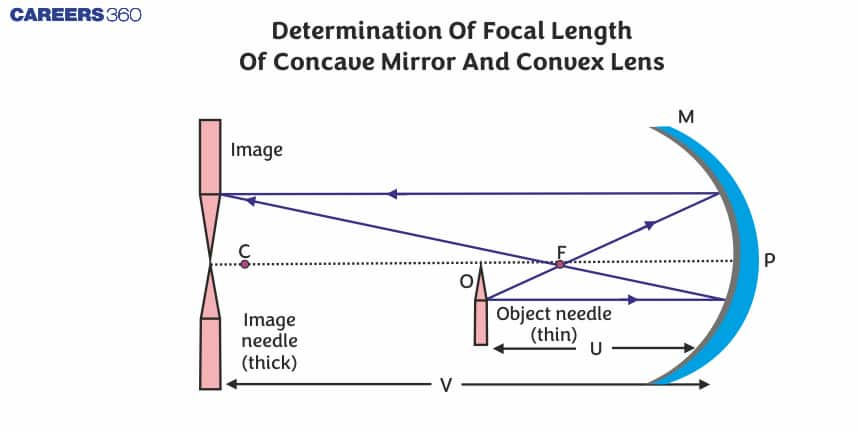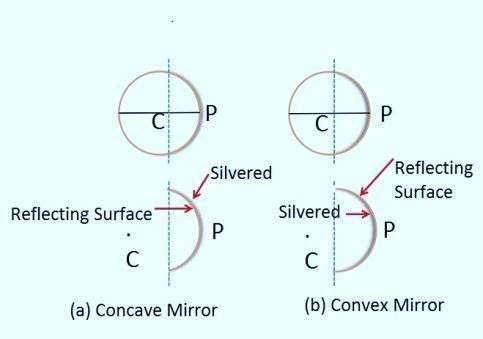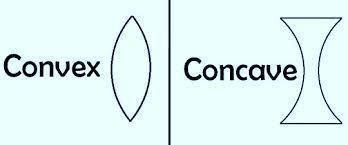Determination Of Focal Length Of Concave Mirror And Convex Lens
In this article, we will explore the focal length of different optical devices such as the convex lens concave mirror. You will learn what focal length means, how it is measured, and why it is important in ray optics. This topic forms a foundation for understanding image formation, mirror formula, lens formula, and ray diagrams-concepts that are important for both school exams and competitive exams like JEE Main and NEET.
This Story also Contains
- What is the Focal Length of a Convex Lens and a Concave Mirror?
- Types of Spherical Mirror
- How to Find the Focal Length of a Concave Mirror?
- What is a Lens?
- How to Find the Focal Length of a Convex Lens?

Also read -
What is the Focal Length of a Convex Lens and a Concave Mirror?
Before learning about focal length, let us understand the basic idea of a mirror.
A mirror is a polished reflecting surface, usually coated on one side, that reflects most of the light falling on it.
Types of Mirrors
Mirrors are mainly of two types:
1. Plane Mirror - A flat and smooth surface that reflects nearly all the light rays falling on it.
2. Spherical Mirror - A curved mirror that forms part of a hollow sphere with one side polished.
Types of Spherical Mirror
Spherical mirrors are of two types:
1. Concave Mirror
A concave mirror has its reflecting surface curved inward. Because it converges light rays to a point, it is also called a converging mirror.
2. Convex Mirror
A convex mirror has its reflecting surface bulged outward. It diverges light rays and is therefore known as a diverging mirror.

Terminology of Spherical Mirrors
1. Pole (P) - The midpoint of the mirror's reflecting surface.
2. Centre of Curvature (C) - The center of the sphere from which the mirror is made.
3. Radius of Curvature ( $\mathbf{R}$ ) - Distance between pole and centre of curvature.
4. Principal Axis - A straight line passing through the pole and centre of curvature.
5. Aperture - The effective diameter of the mirror's reflecting surface.
6. Focus (F) - The midpoint of the radius of curvature where reflected rays meet or appear to meet.
7. Focal Length (f) - The distance between the pole and the focus of the mirror.
How to Find the Focal Length of a Concave Mirror?
- To find the focal length of a concave mirror:
- Hold the mirror facing the Sun.
- Reflect the sunlight onto a sheet of paper.
- Move the paper slowly until a bright, sharp spot forms.
- Measure the distance between the mirror and this bright spot.
This distance is approximately the focal length of the concave mirror.
What is a Lens?
A lens is a transparent optical device bounded by two surfaces, at least one of which is spherical.
Types of Lenses
1. Concave Lens - Curved inward on both sides; diverges light rays.
2. Convex Lens - Bulges outward; converges parallel light rays.

Terminology of Spherical Lenses
1. Optical Centre ( $\mathbf{0}$ ) - The central point of a lens.
2. Centres of Curvature - Centers of the spheres forming the lens surfaces.
3. Principal Axis - A straight line joining the two centres of curvature.
4. Aperture - The effective diameter of the lens.
5. Principal Focus (F) - The point where parallel light rays converge or appear to diverge afer refraction.
6. Focal Length (f) - The distance from the optical centre to the principal focus.
Also Read:
- NCERT solutions for Class 12 Physics Chapter 9 Ray Optics and Optical Instruments
- NCERT Exemplar Class 12 Physics Solutions Chapter 9 Ray Optics and Optical Instruments
- NCERT notes Class 12 Physics Chapter 9 Ray Optics and Optical Instruments
How to Find the Focal Length of a Convex Lens?
The steps are similar to those used for concave mirrors:
- Hold the convex lens facing the Sun.
- Allow the sunlight to pass through the lens onto a sheet of paper.
- Move the paper until you obtain a sharp, bright image of the Sun.
- The distance between the lens and the image gives the focal length of the convex lens.
The sharp spot of light may also burn the paper due to strong concentration of sunlight.
Also check-
- NCERT Exemplar Class 11th Physics Solutions
- NCERT Exemplar Class 12th Physics Solutions
- NCERT Exemplar Solutions for All Subjects
NCERT Physics Notes:
Frequently Asked Questions (FAQs)
The focal length of a convex lens is the distance of principal focus from the optical center of a lens. It is represented by f.
The focal length of a concave mirror is always negative.
The focal length of a concave mirror is the distance between its pole and the point where parallel rays of light converge after reflection.
We face the mirror toward the Sun and move a sheet of paper until a bright, sharp spot appears. The distance between the mirror and this spot is its focal length.
Sunlight consists of parallel rays. When these rays reflect from a concave mirror, they meet at the focus, making it easier to locate the focal point.